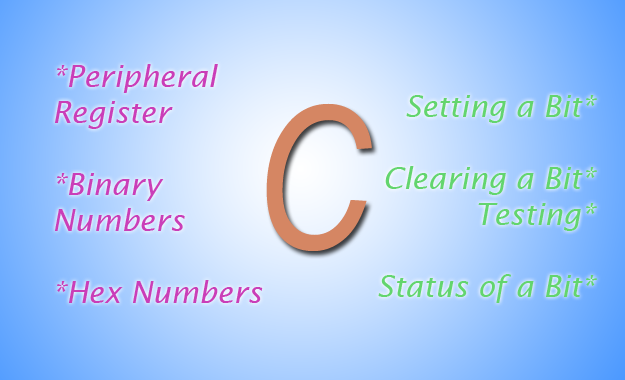
Programming in C – Tips for Embedded Development.
Here I will highlight some features of C language commonly used in 8 bit embedded platforms like 8051, AVR and PICs. While programming microcontrollers in C most of the time we have to deal with registers. Most common tasks are setting and clearing bits in a register and check whether a bit is 0 or 1 in a given register. So here I will give detail on those topics, it will help you if you are new to embedded programming in C and if you get confused when you see some codes. A Register A register is simply a collection of some bits (mostly 8 bits in case of 8bit MCUs). Either each different bit in a register has some purpose or the register as a whole holds a value. Registers serves as connection between a CPU and a Peripheral device (like ADC or TIMER). By modifying the register the CPU is actually instructing the PERIPHERAL to do something or it is configuring it in some way. And by reading a register, the CPU can know the state of peripheral or read associated data. Fig.: CPU writing to Peripheral Register Fig.: CPU Reading from Peripheral Register Binary Numbers in C When you write a=110; in C it means you are setting the value of variable"a" to "one hundred and […]
